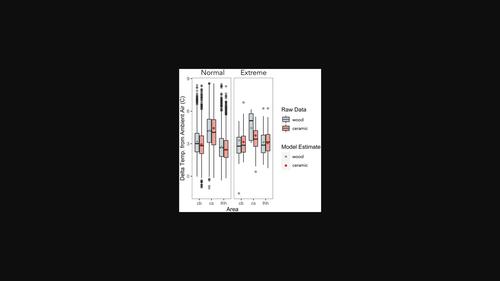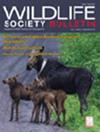Effectiveness of novel artificial seabird nest modules for reducing ambient temperature transfer in a warming climate
IF 1.5
4区 环境科学与生态学
Q3 Environmental Science
引用次数: 0
Abstract
Artificial habitat for cavity nesting birds can provide excellent opportunities for research and conservation efforts but may expose species to the negative impacts of warming ambient temperatures with climate change. Artificial nest boxes have been successfully used to monitor the breeding activity of the Cassin's auklet (Ptychoramphus aleuticus), a small burrow-nesting seabird, on Southeast Farallon Island (SEFI) since 1971. Mean monthly ambient air temperatures on SEFI during the summer months have increased at an annual rate of roughly 0.03°C from 1971 to 2022, along with an increase in the number of extreme heat days and average maximum temperature, confirming a warming trend at this seabird colony. Given a projected increase in global temperature, we assessed the effectiveness of traditional wooden nest boxes vs. newer ceramic modules at buffering external ambient air temperatures in normal and extreme heat days across a gradient of microclimates on SEFI. Results from fitting linear mixed effects models indicated that, on average, internal temperatures of wooden and ceramic nests (of comparable size and shape) exhibited similar rates of deviation from ambient air temperature of approximately 0.15°C, even during extreme heat events. Ceramic modules did keep nest chambers cooler by approximately 1.2°C than wooden boxes during extreme events at the warmer, drier southern location of the island. Our results can help guide future efforts to design artificial nests that can effectively provide habitat for seabirds as ambient temperatures increase.

新型人工海鸟巢模块在气候变暖情况下减少环境温度传递的效果
为穴巢鸟类提供人工栖息地可为研究和保护工作提供绝佳机会,但也可能使物种受到气候变化导致的环境温度升高的负面影响。自 1971 年以来,人工巢箱一直被成功地用于监测东南法拉隆岛(SEFI)上的小型穴巢海鸟卡辛小鸟(Ptychoramphus aleuticus)的繁殖活动。从 1971 年到 2022 年,东南法拉伦岛夏季月平均环境气温以每年约 0.03°C 的速度上升,极端高温日数和平均最高气温也随之上升,这证实了该海鸟栖息地的变暖趋势。鉴于全球气温预计会升高,我们评估了传统木制巢箱与新型陶瓷模块在海鸟栖息地微气候梯度的正常和极端高温天缓冲外部环境空气温度的效果。拟合线性混合效应模型的结果表明,平均而言,木制巢箱和陶瓷巢箱(大小和形状相当)的内部温度与环境空气温度的偏差率相近,约为0.15°C,即使在极端炎热的情况下也是如此。在岛屿南部较温暖、干燥的地方,陶瓷模块确实能使巢室的温度比木箱低约 1.2°C。我们的研究结果有助于指导今后设计人工巢的工作,从而在环境温度升高时有效地为海鸟提供栖息地。
本文章由计算机程序翻译,如有差异,请以英文原文为准。
求助全文
约1分钟内获得全文
求助全文
来源期刊

Wildlife Society Bulletin
BIODIVERSITY CONSERVATION-
CiteScore
2.10
自引率
13.30%
发文量
0
期刊介绍:
The Wildlife Society Bulletin is a journal for wildlife practitioners that effectively integrates cutting edge science with management and conservation, and also covers important policy issues, particularly those that focus on the integration of science and policy. Wildlife Society Bulletin includes articles on contemporary wildlife management and conservation, education, administration, law enforcement, and review articles on the philosophy and history of wildlife management and conservation. This includes:
Reports on practices designed to achieve wildlife management or conservation goals.
Presentation of new techniques or evaluation of techniques for studying or managing wildlife.
Retrospective analyses of wildlife management and conservation programs, including the reasons for success or failure.
Analyses or reports of wildlife policies, regulations, education, administration, law enforcement.
Review articles on the philosophy and history of wildlife management and conservation. as well as other pertinent topics that are deemed more appropriate for the Wildlife Society Bulletin than for The Journal of Wildlife Management.
Book reviews that focus on applied research, policy or wildlife management and conservation.
 求助内容:
求助内容: 应助结果提醒方式:
应助结果提醒方式:


